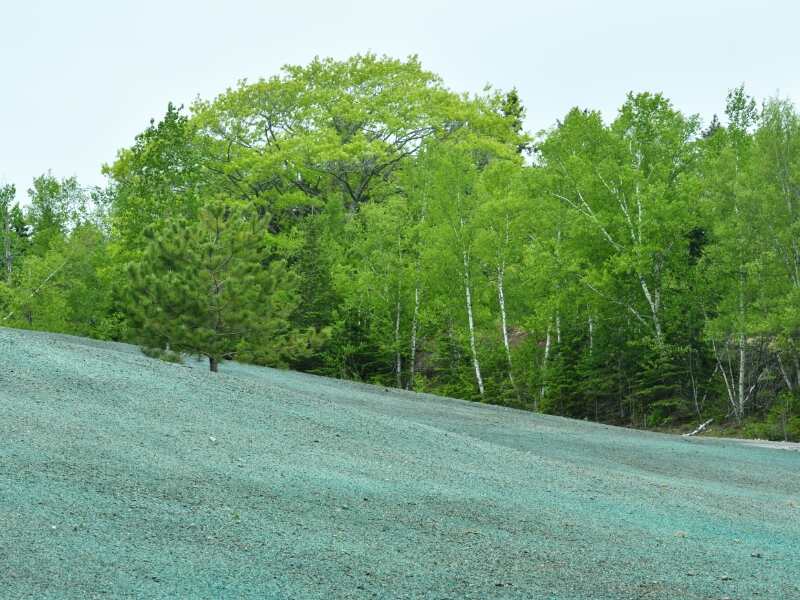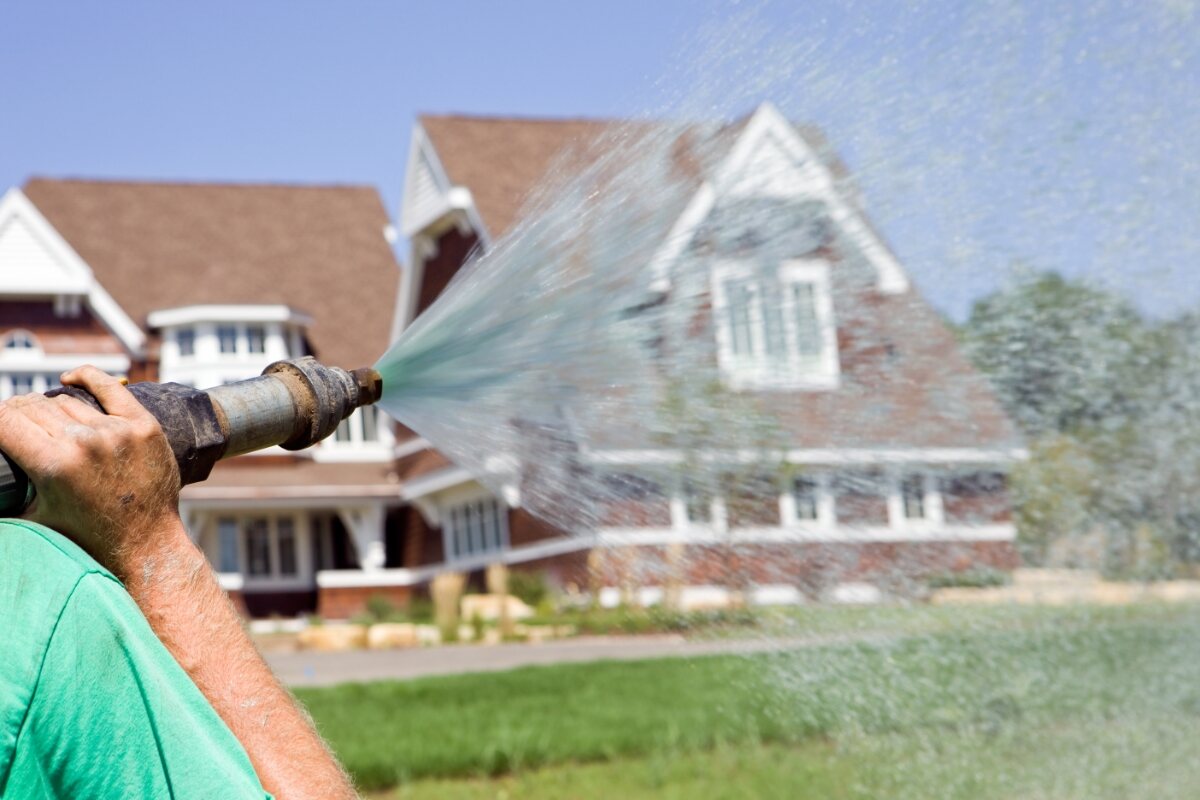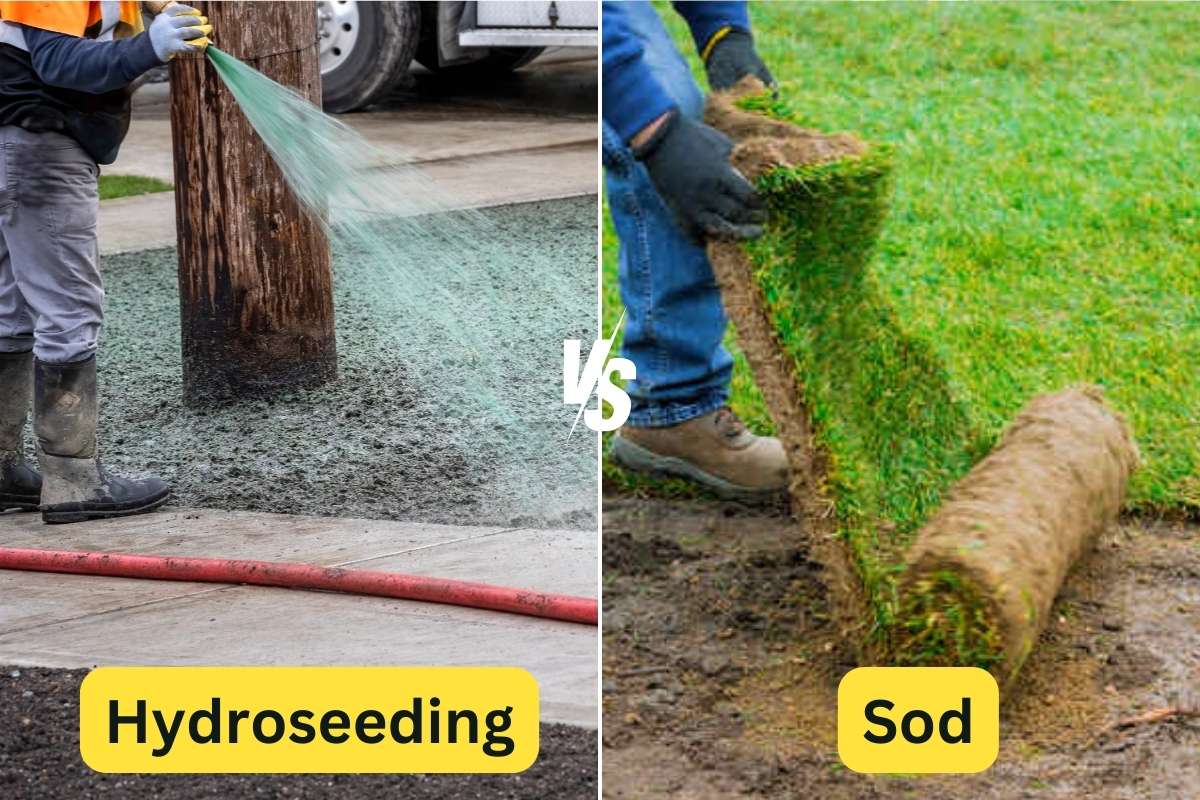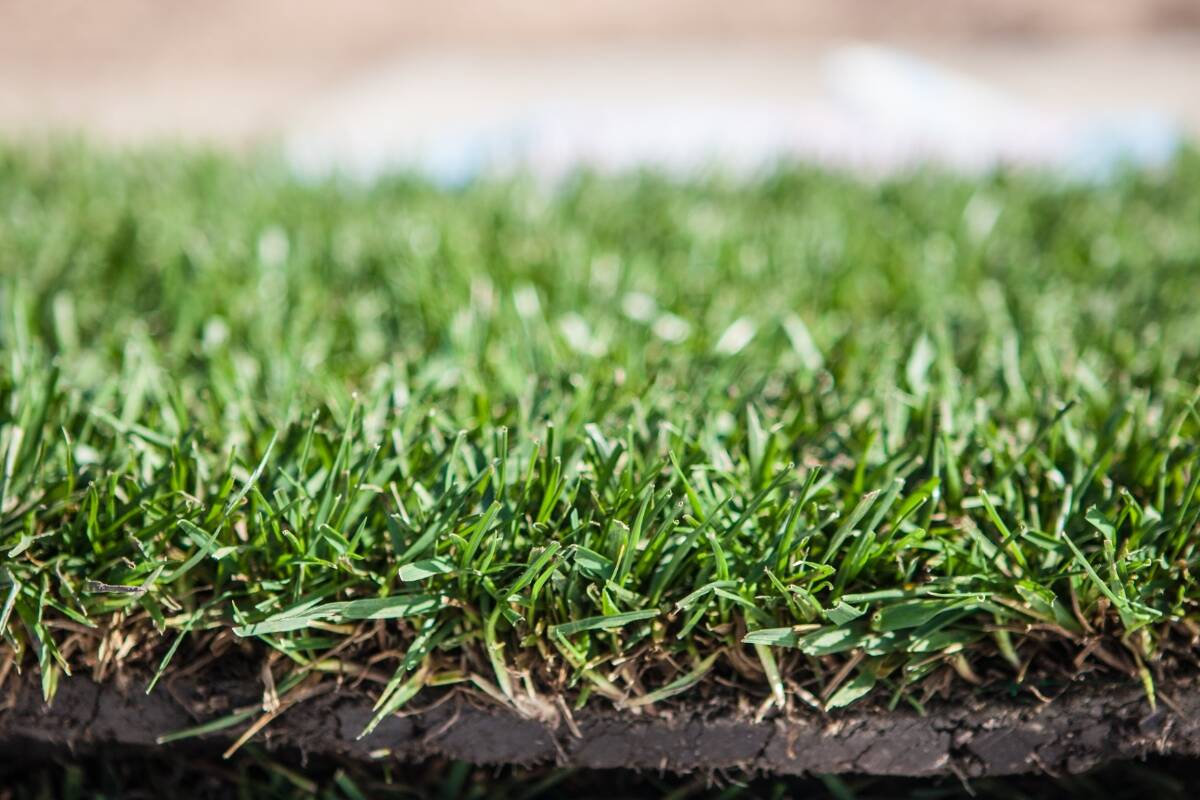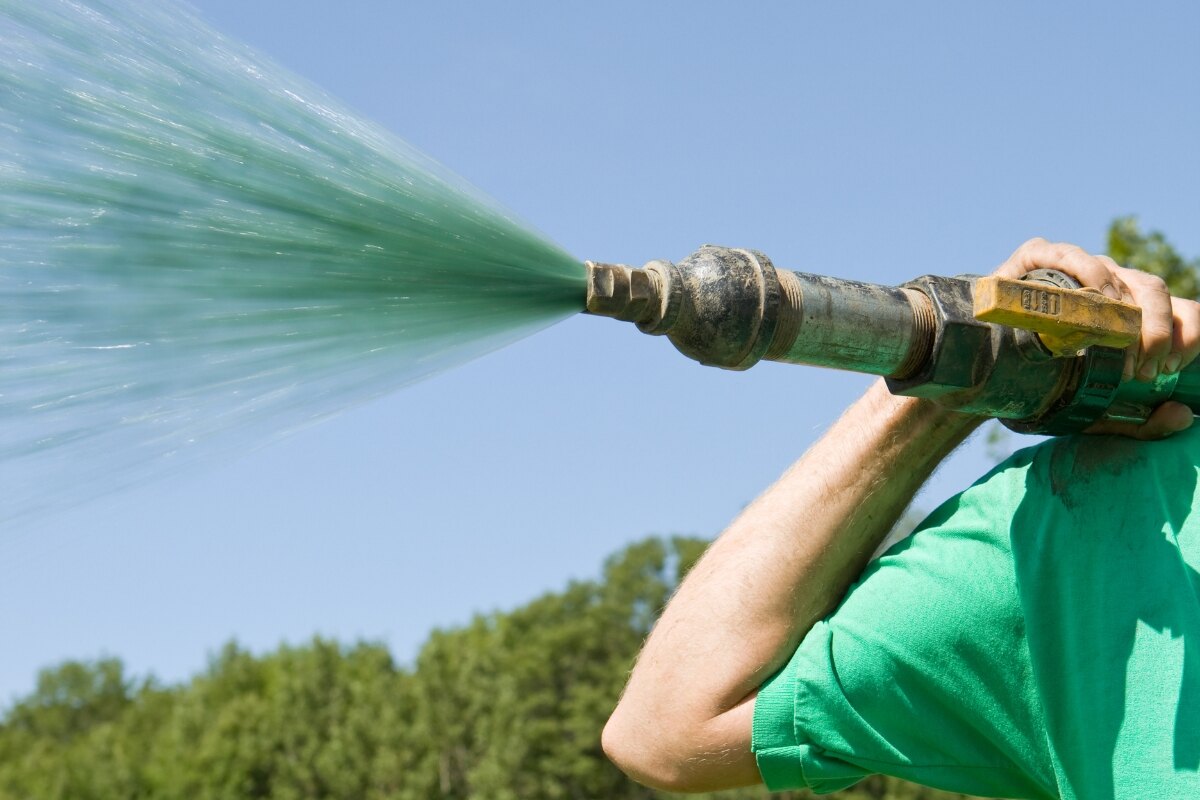
Hydroseeding is gaining popularity as a seeding method because of its many pros. This is the case not just for residential lawns but also for commercial and government projects, like golf courses, school fields, and construction sites.
But why should you choose hydroseeding over laying sod and traditional seeding? Let’s go through the benefits of hydroseeding that other lawn establishment methods can’t match.
Cost-Effective
One of the main draws of hydroseeding is its cost-effectiveness. Compared to sod, the cost of hydroseeding is much more affordable; it can be 50% to 80% cheaper than the cost of laying sod, especially when you’re working with large areas. Although money first comes to mind, hydroseeding is also cost-effective in other ways — primarily when it comes to labor costs and time.
Hydroseeding is much more convenient than both laying sod and traditional hand-seeding. Finishing a hydroseeding project is less labor-intensive, and you can accomplish it in less time. A traditionally seeded lawn that took half a day to sow could have taken about an hour and a half to hydroseed. You also don’t have to deal with huge rolls of sod.
Better Coverage
Compared to their sod and hand-seeded counterparts, hydroseeded lawns are more uniform. Traditionally seeded lawns tend to grow patchy, needing to be overseeded to cover up the bald spots. While sod isn’t patchy, its roll nature often means your lawn will have seams that look artificial and unsightly.
Hydroseeded lawns grow thicker and more evenly, largely in part to how the seeds are applied to your lawn. The seeds are spread out evenly since they’re sprayed in a thoroughly mixed slurry. Once settled, the grass seeds will grow vigorously and safely in place thanks to the mulch, fertilizer, and water that help support grass growth.
Since the hydroseeding mixture is sprayed, you can ensure that the whole area you want your turf to grow in will be evenly coated. This includes hard-to-reach areas and steep slopes that would be tricky to plant seeds or lay sod on.
Healthier Lawn
As mentioned earlier, hydroseeded lawns are of better quality; they tend to be thicker, greener, and hardier than their sod and hand-seeded counterparts. Here are the reasons why hydroseeding leads to a healthier and more beautiful lawn:
- Promotes Early Growth
- Soil Additives
- Healthier Root Systems
- Fewer Weed Seeds
Promotes Early Growth
Hydroseed slurry contains all the right ingredients to promote healthy lawn growth right from the beginning.
The mulch in a hydroseeding slurry helps seeds sprout in many ways. First, it keeps the seeds — and the subsequent seedlings — in place, safe from wind and air erosion. Second, it also shields them from too much sunlight and fluctuating temperatures. Lastly, the mulch fertilizes the growing grass as it decomposes.
However, your turf won’t rely on the mulch by itself for nutrients. The hydroseed slurry contains a lawn fertilizer that supplies the seedlings with the essential nutrients they need to grow healthy and strong.
Soil Additives
While not all hydroseed slurries contain soil amendments, you could add them if your lawn needs them. For example, you might need to control your soil’s pH level with lime, as many grasses grow best in soil with a pH range of 6.0 to 7.0.
These soil amendments also help improve soil quality, which bolsters your lawn’s health and quality.
Healthier Root Systems
Hydroseeding involves growing grass from seed, which is in itself a crucial advantage over laying sod. The newly grown grass will have a deep root system, resulting in better disease resistance and overall turf health.
Growing grass from seed — whether hydroseeded or hand-seeded — also doesn’t have the threat of transplant shock. Your grass will grow to adapt to your soil. Sod might experience transplant shock because it’s grown off of your property where the soil conditions are different.
Fewer Weed Seeds
Lastly, many hydroseed mixes contain very few weed seeds in them. The fewer weeds your grass has to contend with, the better its growth will be. And healthy grass growth typically means better weed resistance, as healthy grass outcompetes weeds much easier.
Faster Results
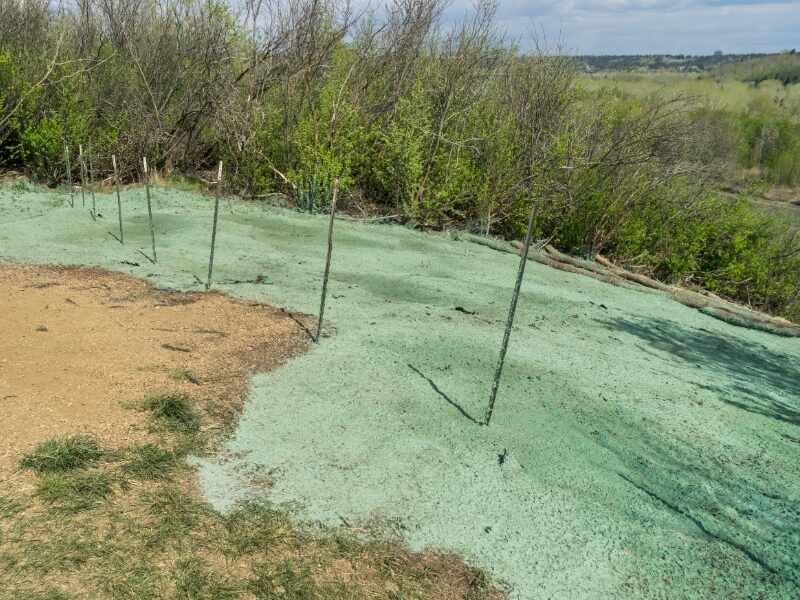
Although hydroseeding doesn’t give you a lawn instantly like laying sod does, it still shows visible results much faster than traditional dry seeding. A hydroseeded lawn will sprout in as little as 7 days, and it’ll be fully established in 3 to 4 weeks.
Hydroseeded lawns sprout quickly because the slurry can hold a lot of moisture, which helps with seed germination and seedling growth. Keeping the slurry moist in the first few weeks is crucial. Drying out so early in the new turf’s life can stress it out and injure it.
Erosion Control
Hydroseeding as a seeding method is also growing in popularity because of how good it is as an erosion control solution. The hydroseeding mixture sticks to the soil firmly, keeping not only the seeds but also the soil in place. If the slurry contains a tackifier, then the bond becomes even stronger.
The slurry protects the soil from many kinds of soil erosion agents: wind, rain, sun, and pests, which burrow through the soil. It even works on sloped areas, which are more prone to erosion.
Customizable
Hydroseeding is much more customizable than laying sod when it comes to the types of grass available. Most rolls of sod contain a set type of grass. With hydroseeding, on the other hand, you can mix and match grass seeds for a custom seed blend.
You can use this method with different types of seeds, too. For example, you can hydroseed wildflowers and ground covers in addition to traditional turf.
FAQs About the Benefits of Hydroseeding
Hydroseeding isn’t a perfect method of seeding. Here are some downsides to hydroseeding:
✗ It needs a lot of water in its first few weeks
✗ While doable, it’s a bit harder to establish on slopes
✗ DIY hydroseeding can be less effective and a little more complicated than DIY sod and DIY traditional seeding
The best time to hydroseed generally depends on the type of grass you’re using. Warm-season grasses should be hydroseeded from late spring to early summer, while cool-season grasses should be hydroseeded from late summer to early fall.
Generally, you want to hydroseed during your turf’s growing season, which typically ranges from spring to fall. Hydroseeding in the summer requires more water. Make sure to plant no later than 45 days before the first frost if you’re seeding in the fall.
Yes, you can. Here’s a short step-by-step guide to hydroseeding your lawn:
1. Select your seeds
2. Perform a soil test
3. Clear your yard of weeds and debris
4. Mark sprinkler heads
5. Grade soil 2 ½ to 3 inches below your desired grade
6. Add topsoil, compost, and other soil amendments
7. Re-grade soil
8. Prep hydroseeding equipment
9. Spray hydroseed slurry
You can read our DIY hydroseeding guide for more in-depth instructions.
Call in the Pros for a Healthy and Lush Lawn
Now that you know the advantages of hydroseeding, you might be tempted to hydroseed next time you need a new lawn. While you can do it yourself, you’ll need some special equipment — namely, a hydroseeder — and some time to properly complete it.
Why not let others sow these seeds for you to reap the benefits later on? A professional lawn care company will be better equipped to tackle a hydroseeding project than the average homeowner. Connect with a lawn care pro near you through LawnStarter today.
Main photo Credit: BanksPhotos / Canva Pro / License
